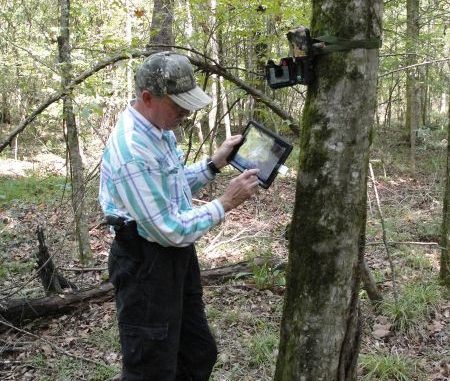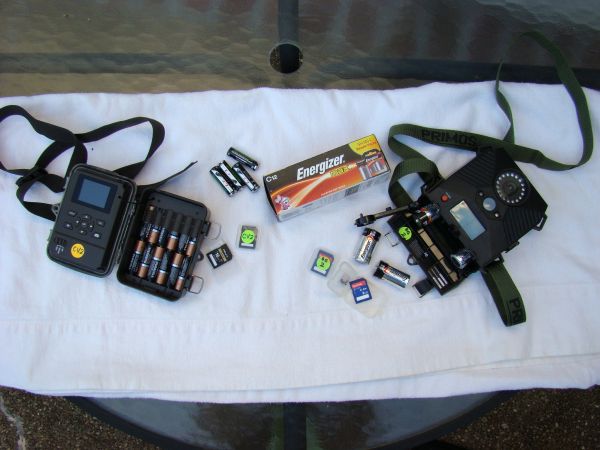
Comparing where we are these days regarding surveillance of whitetail deer with where things were back 15 to 20 years ago is somewhat like comparing a WWI biplane to a modern fighter jet.
I had tons of fun deer hunting back in the day, but to a great extent it was a hit-or-miss proposition. You saw what was going on from your stand, or heard what was seen or not seen from your buddies while they were on stand.
In a way, I still miss that era because there was an aura of mystery and surprise to the whole process.
But don’t misread my intent, because I dearly love the added dimensions technology and technology-enabled deer research have added to this passion we all share and love so much.
It is not necessarily better now, nor was it better back then — but deer hunting and the science of deer management have evolved and grown, and it is just different now.
And I, for one, like most of the differences.
I well remember those days back in the early ’80s, when my son who was in grade school at the time acted as my personal “trail camera” observer. He was just learning gun safety and how to deer hunt, so at times I would drop him off, unarmed, at a stand on my way to a nearby location for my morning or evening vigil so he could see what passed by and when.
After I picked him up and we trekked back to camp, he would brief me on what he had seen. With the exception of maybe running a strand of thread across a trail to see later if it had been disturbed, using my son as an observer was about the highest-tech extent of opportunities available for my deer scouting.
At the time, I could not have even conceived of affordable devices that could yield 24/7, rain-or-shine, infrared night, full-color daytime, HD photos and videos.
The technological progress that has occurred is simply stunning, at least to an old guy like me who has been tramping through the whitetail woods for more than 45 years — and I didn’t even get started until my college days. The opportunities now afforded to us for deer-hunting knowledge and success through trail camera scouting are almost endless.
I received a trail camera as a Christmas gift a little more than 10 years ago. That first trail camera was somewhat of a curiosity at first, but with a little practice and time it and the numerous additional cameras that followed began to yield information and data that has made me more successful, more knowledgeable, and happier as a hunter and harvester of whitetail deer.
It has been said by numerous deer management experts that trail cameras can be the single best tool in a manager or landowner’s toolbox.

Let’s go over a few tenants of my overall deer scouting philosophy, including some techniques for seasonal trail camera surveillance that have worked for me year after year.
When it comes to the overall handling of trail camera photo data, less is not necessarily more. In other words, place as many cameras in action as time and resources will allow.
Based on what I have done in the past, my preference is have in operation about one camera for every 25 acres or so that I am surveilling. That equates to roughly eight cameras for 200 acres.
Bear in mind, though, that a line or circuit of cameras is like a trap line: It must be run and maintained on a regular basis for it to be successful.
An emphasis here is that I download, keep and catalog all my trail camera photos throughout the season. No doubt about it: Extra steps like this take considerable time and effort, but I can unequivocally state that a properly cataloged, constantly growing and evolving trail camera database can be absolute dynamite if used fully and properly.
It would be nice if cost was not a factor, allowing me to always employ the latest and greatest and most-expensive, but my personal success using cameras has been a result of using very standard, economical, off-the-shelf gear.
The key — no matter what equipment you use— is attention to detail and wringing out everything you can from your photo data stream. Extra effort with inexpensive, ordinary gear will always trump use of fancy and expensive gear with limited effort.
This might seem like a minor detail, but two dedicated digital memory cards allocated to each camera is an absolute must in my book. In my experience, the simultaneous use of at least two or three brands and models of cameras, means that the sharing of memory cards between cameras is just inviting trouble. Once formatted to and used in a particular camera, why take a chance that a formatting incompatibility between cameras or models winds up costing you valuable photo intel.
To ensure I never have a problem, I simply dedicate two memory cards to each camera, with each card identified with a corresponding sticker and alpha-numeric tag.
When I run my camera circuit, I use a camo shoulder bag that holds any and everything I think I might need. The list includes extra batteries, a pouch containing my coded spare memory cards, a small notebook to jot down field notes and list camera codes and camera locations, extra straps, a Leatherman tool for making minor repairs and camera operating instructions.
I even sometimes bring an iPad with a memory card adaptor so I can quickly flip through photos to see if a camera should be repositioned or moved.
If you aren’t already using trail cameras, give it a try. You might be surprised at just how much fun it is and how much you can learn about deer movement habits on your property.
If you are already into the camera game, try kicking it up a notch or two. The additional time and effort involved should be well worth the price.


